Just 3 cities in the U.S. immerse kindergartners in Haitian Creole. One is Boynton Beach.
BOYNTON BEACH — Patricia Michel's kindergarten classroom at Rolling Green Elementary School in Boynton Beach has all the usual things inside: 19 biwos, or desks arranged in groups of five, one tablo elektronik, or SMART board, at the front and its own twalèt, which her students ask to use throughout the day by saying, "eske mwem ka ale nan twalèt?" or "Can I go to the bathroom?"
Michel's kindergarten class is the first Haitian Creole dual language program in Palm Beach County. It's one of just a handful of programs like it across the country in select Miami and Boston public schools.
Their classroom's posters and their math workbooks are written in Creole, and Michel exclusively speaks in her heritage language as she teaches.
But the 18 students are far from bilingual.
Like most 5-year-olds, they're antsy — switching between Creole and English with their peers and getting stumped on words they don't know.
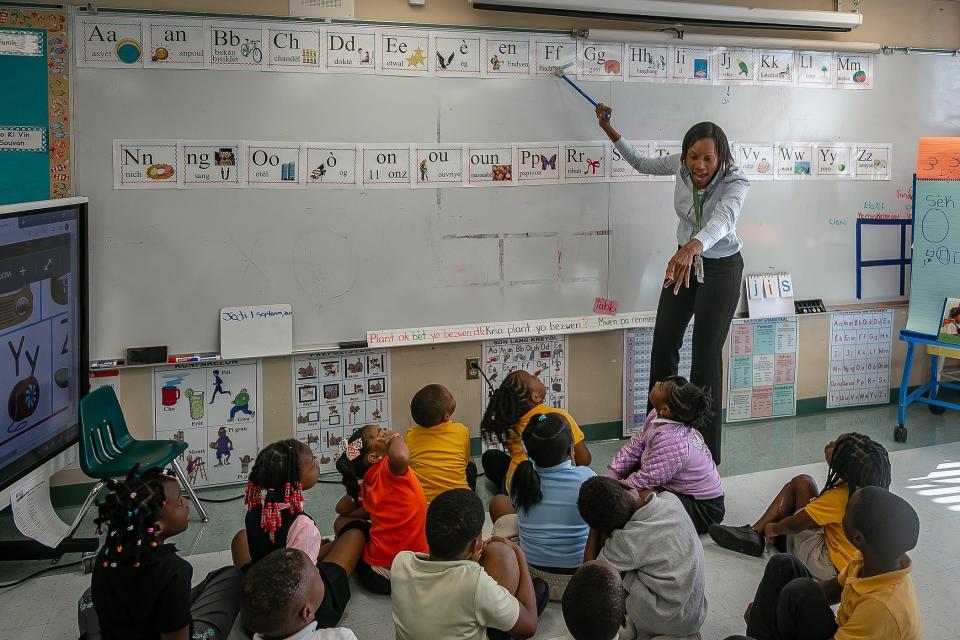
Her students speak Creole, or Kreyòl, at home, Michel said, but like many speakers of heritage languages in the United States, there's no formal teaching of sentence structure or vocabulary lessons by groups of items such as fruits or pieces of clothing.
"A lot of them learn and hear Creole at home, but they're not reading or writing it," Michel said. "Only one of my students knew the alphabet in Creole before coming to my class."
At home, she said it's more likely they learn Creole words and sentences by being asked to pick up things or by listening to older generations talk about family goings on.
Which is why some Creole words such as jako stumped most of the class on the morning of Sept. 1 as they ran through different alphabet sounds and words with Michel.
It means "parrot."
More from the education desk: Books coming to your child's school library? Not until you have a chance to weigh in
Inside newest school: New Boca Raton elementary school will combat crowding nearby. Take a look inside
More: Citing parental rights law, schools say some kids can't be treated with Band-Aids, ice packs
100,000 people speak Creole in Palm Beach County
About 60% of Rolling Green Elementary's student population has ethnic roots in Haiti.
Allyson Manning, the school's principal, said most of her students are second- or third- generation Americans — the generations whose parents or grandparents emigrated to the United States and who are at greatest risk of losing their heritage language.
The "third-generation expectation," presented by sociolinguist Joshua Fishman in 1966 and again by Calvin Veltman in 1983, is a model of heritage language loss where members of the immigrant generation learn as much English as they can but speak their mother tongue at home. The second generation speaks the heritage language at home but shifts to unaccented English at school and work.
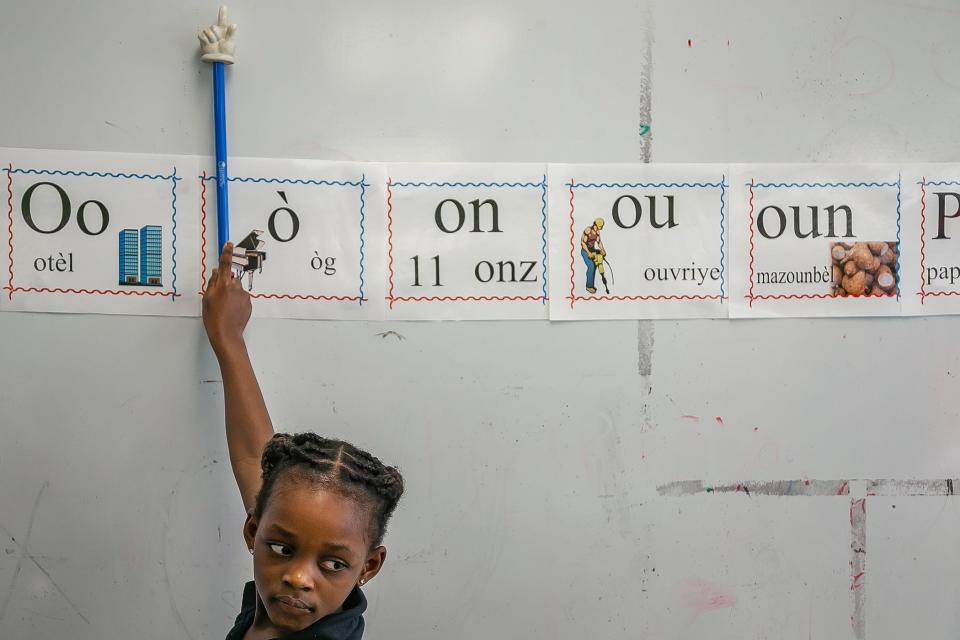
In Fishman's and Veltman's model, the third generation speaks English at home and heritage language knowledge disappears.
While sociolinguists have observed different patterns in U.S.-born English language learners, staff and school leaders at Rolling Green Elementary are trying to disrupt the erasure of Creole by renewing students' interest and access to the language.
To work with parents, members of the school's front desk staff slide seamlessly between English and Creole. They call out to most people who enter the office's front door in Creole first.
In Palm Beach County, nearly 100,000 residents speak Creole out of 1.5 million who live here, according to the school district, which pulled data from the U.S. Census Bureau to support its push for the dual language program. About 9,500 students in the district say they speak Creole at home.
And the language is part of the fabric of dozens of communities here: Palm Beach County bus schedules, voting information and school district flyers are available in Creole along as well as English and Spanish. Therapists advertise their ability to work with Creole-speaking clients, and El Presidente supermarkets carry items labeled only in Creole.
But as younger students consume more videos, books and music in English, they risk losing the ability to use those services in Creole and communicate with elder generations of their family.
"Our goal is for these students to be bilingual and biliterate," district world languages and global studies coordinator Jameson Stell said. "That's how we help preserve intergenerational connections."
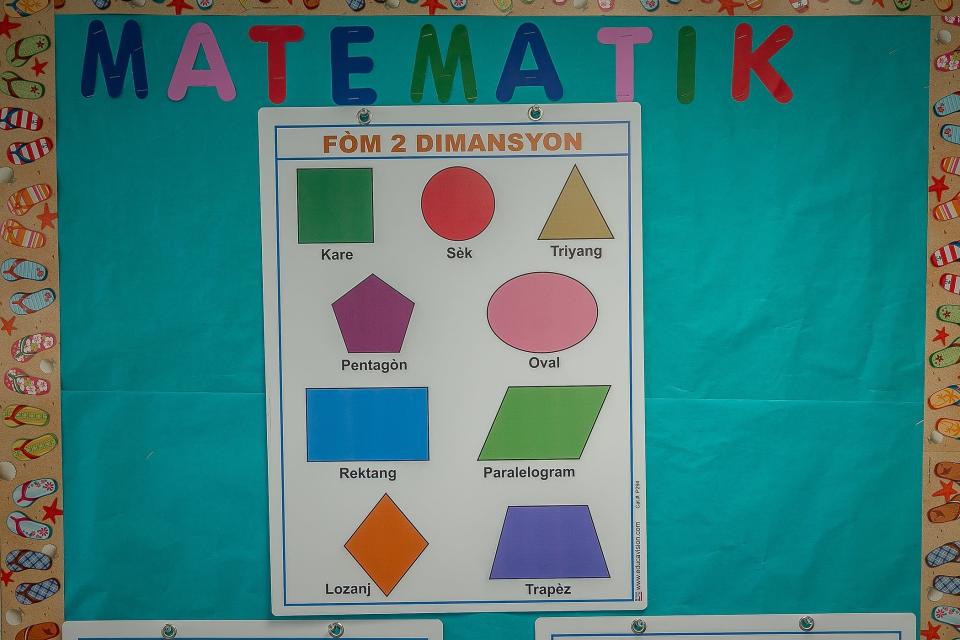
Classes in Haiti are taught in French. Getting a Creole curriculum isn't easy
Creating the dual language program wasn't as easy as borrowing school materials from Haiti, Michel explained.
Most classes taught on the island are conducted in French, although a small number of schools focus on transitioning children from Creole to French through elementary school.
"I could only speak it at home," Michel said of using Creole where she grew up in St. Marc, Haiti. "Because you could not speak it in school. I had to speak French in school."
That meant teaching materials in Creole are hard to come by for U.S.-based programs, Stell said.
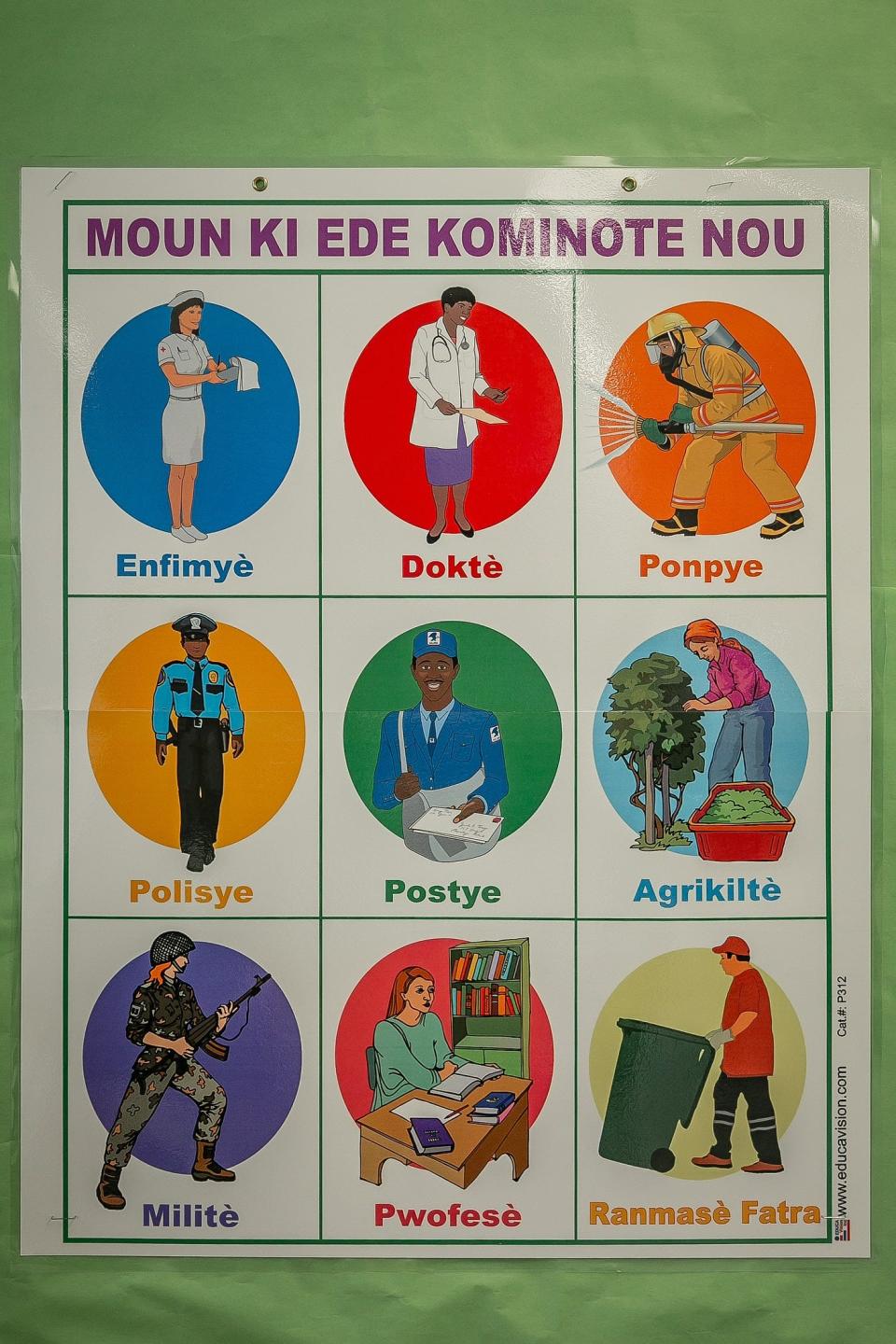
Most curricula available in Creole are produced by a company in Pompano Beach started by Haitian-born researcher Féquière Vilsaint, who left his work in biochemistry at the University of South Florida to translate math and language arts materials into Creole for U.S. students. He now works with 54 other authors to develop workbooks and classroom materials.
That curriculum had to go through official adoption by the Palm Beach County School District — and be reviewed by a committee of three Creole-speaking staff who could understand and assess it.
Good morning from an exciting day! ☀️
I’m sitting in today on a class in Palm Beach County’s first Haitian Creole dual language program! There are about 300,000 people in Florida who speak Haitian Creole 🇭🇹
Follow along for updates from the @pbpost 👇👇👇 pic.twitter.com/mMDd95PP2j— Kati Kokal (@katikokal) September 1, 2022
Second-year teacher dreams of bilingual high school grads
Rolling Green's dual language program won't stop at kindergarten.
The 18 students in Michel's classroom and the 18 other students in the program will go into first grade next year with a new Creole-speaking teacher. They'll continue to do 50% of their language arts and math class in Creole and the other 50% in English.
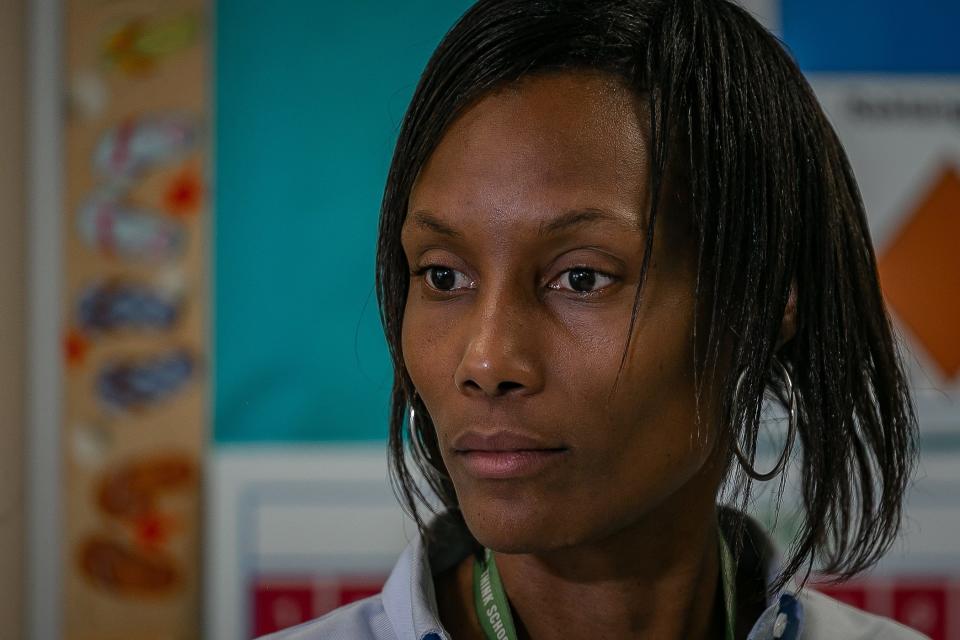
Because of this, the school has to commit to building a roster of Creole-speaking teachers for every grade over the next six years, Stell said.
Michel, in her second year of teaching at Rolling Green, was eager to take the Creole fluency test last year and begin teaching in the program. Her energy radiated as she corralled the students around the classroom and read children's books aloud with a booming voice that demanded their attention.
She said her dream for the program is to see her kindergartners become high school graduates who are fluent in English and Creole in 12 years.
"I want to see those kids grow, and I want them to be able to say 'I was the first one that was in kindergarten class and in that program, and that Ms. Michel was my teacher,'" she said.
Now, they're one step closer.
Katherine Kokal is a journalist covering education at The Palm Beach Post. You can reach her at kkokal@pbpost.com. Help support our work, subscribe today!
This article originally appeared on Palm Beach Post: Haitian Creole elementary class in Palm Beach County is one of 3 in US

